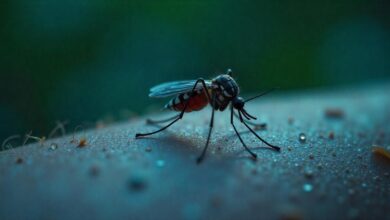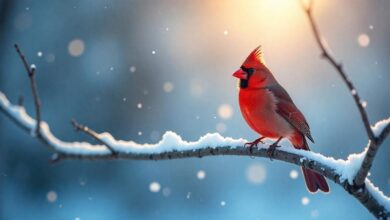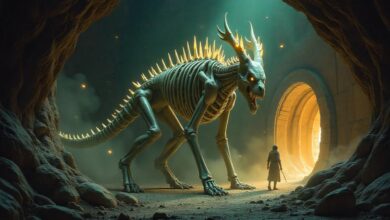Discover Fascinating Animals That Start with N

Some of nature’s most captivating creatures have names starting with the letter “N.” These animals are diverse, ranging from the playful narwhal gliding through icy Arctic waters to the nightingale singing under the moonlight. Through this article, we’ll take you on a fascinating exploration of animals that start with N, uncovering their unique traits, the roles they play in their ecosystems, and the challenges they face in the wild.
By the end, you’ll gain a newfound appreciation for these animals while better understanding their ecological significance. Let’s tap into the wonders of “N” animals!
Notable Animals That Start with N
From land to sea, the collection of animals starting with “N” is nothing short of extraordinary. Here’s a diverse list to get us started:
- Narwhal
- Nightingale
- Numbat
- Newt
- Northern Cardinal
- Nile Crocodile
- Norway Rat
- Nudibranch
- Numida (Helmeted Guinea Fowl)
- Nilgai
These animals aren’t just unique in name—they also boast fascinating characteristics and are found across varied habitats.
Unique Features and Habitats of Each Animal
Narwhal
Often called the “unicorn of the sea,” the narwhal is a species of whale best known for its long, spiral tusk. Found in the Arctic waters of Canada, Greenland, and Russia, narwhals inspire awe with their mythical appearance. Their tusk, actually an elongated tooth, is thought to help with sensory perception.
Nightingale
A bird of delicate beauty and enchanting songs, the nightingale is found across Europe, Asia, and parts of Africa. Known for its astonishing vocal range, the nightingale is often associated with poetry and romance. These shy birds favor dense shrublands for privacy.
Numbat
Hailing from the woodlands of Australia, the numbat is a small marsupial with unique striped fur. With a diet primarily consisting of termites, numbats play a crucial role in controlling pest populations. An endearing yet endangered creature, the numbat reminds us of the importance of wildlife conservation.
Newt
Newts are amphibians often mistaken for lizards due to their sleek, slender forms. They thrive in freshwater environments and are well known for their ability to regenerate lost body parts, such as limbs or tails. A symbol of resilience, the newt’s regenerative abilities are being explored in scientific research.
Northern Cardinal
This brilliant red bird is a common visitor in backyards across North and Central America. Its vibrant plumage and cheerful whistle symbolize hope and energy for many bird enthusiasts. You’ll often find male cardinals energetically defending their territories with their unmistakable call.
Nile Crocodile
The Nile crocodile, one of Africa’s apex predators, commands tremendous respect. Found in rivers, lakes, and wetlands, these massive reptiles use their strength and stealth to hunt prey. Despite their fearsome reputation, Nile crocodiles play a vital role in maintaining the health of aquatic ecosystems.
Norway Rat
Love them or hate them, Norway rats are adaptable survivors who dwell in urban settings worldwide. While often seen as pests, these intelligent creatures have contributed significantly to science, especially as research models in laboratory studies.
Nudibranch
Nudibranchs are vibrantly colored sea slugs found in oceans across the globe. Known for their astonishing beauty, these creatures absorb toxins from other organisms to defend themselves against predators. Nudibranchs remind us of the marine world’s artistic brilliance.
Numida (Helmeted Guinea Fowl)
Native to Africa, helmeted guinea fowl are ground-dwelling birds characterized by their speckled feathers and distinctive helmets. Their social culture and remarkable foraging skills make them invaluable to farmers for controlling insect populations.
Nilgai
The Nilgai, or “blue bull,” is the largest Asian antelope. Found primarily in India and Nepal, these majestic creatures are icons of open grasslands. The Nilgai symbolizes grace and strength, thriving within fragile ecosystems dependent on biodiversity.
Ecological Importance
Every animal beginning with “N” has its own set of invaluable contributions to the ecosystem. For instance, the narwhal is often studied for climate change research due to its dependence on icy habitats, acting as an indicator species. Similarly, creatures like the numbat regulate termite populations that can otherwise destroy woodland ecosystems.
Even smaller species, such as the newt or nudibranch, play significant roles. Newts are essential for maintaining a balanced ecosystem by consuming insect larvae, while nudibranchs help control algae growth in ocean habitats. These “N” animals remind us that every species has a role, no matter how big or small.
Conservation Status
While animals like the Northern cardinal are thriving, others face dire challenges. The numbat, for instance, has been classified as an endangered species, with predation and habitat loss threatening its survival. The narwhal also faces uncertainties due to rapidly melting Arctic ice, severely impacting its natural habitat.
Global conservation efforts, such as protected reserves and anti-poaching measures, are critical for safeguarding species like the Nile crocodile and Nilgai. Organizations like WWF and local advocacy groups work tirelessly to preserve habitats, tackle climate change, and combat illegal wildlife trade.
How You Can Help
Wondering how to contribute? Here are some actionable steps to support these magnificent animals:
- Donate to conservation programs or wildlife charities.
- Adopt sustainable habits to reduce your ecological footprint.
- Participate in citizen science programs, such as bird-watching counts.
- Educate others about the importance of protecting wildlife and biodiversity.
Every small effort adds up and paves the way for a thriving planet teeming with diverse life forms.
Celebrating the Wonders of “N” Animals
Throughout this exploration, we’ve uncovered the beauty, purpose, and challenges of animals starting with “N.” Their diversity, from the icy depths where narwhals roam to terrestrial habitats home to numbats, offers a powerful reminder of nature’s richness.
It’s our responsibility to protect these species, ensuring future generations can marvel at their existence. Even small, day-to-day actions can make a world of difference.
Curious to explore even more animals and the wonders they bring to our planet? Start with your backyard or nearby parks—you’ll be amazed at what you find!
FAQs
Q1. Why should I care about animals starting with “N”?
Every species, no matter how niche, enriches our planet’s ecosystems. From narwhals to numbats, each has a unique role in maintaining ecological balance.
Q2. Are there any extinct animals starting with “N”?
Yes. The New Zealand greater short-tailed bat, also referred to as Mystacina robusta, is now unfortunately extinct due to habitat loss and predation.
Q3. How do I learn more about wildlife conservation?
You can follow organizations like the World Wildlife Fund (WWF) or the International Union for Conservation of Nature (IUCN). They provide valuable resources on how to help endangered species and preserve biodiversity.
Q4. What’s the most colorful animal starting with “N”?
The nudibranch wins this title! Its vibrant and diverse coloration makes it one of the most visually stunning creatures on Earth.
Q5. Can I see these animals in the wild?
Some, like the Nile crocodile and Nilgai, can be spotted during safaris, while others, such as nightingales and Northern cardinals, can be observed in natural reserves and backyards. Respect nature by keeping a safe distance when viewing wildlife.




